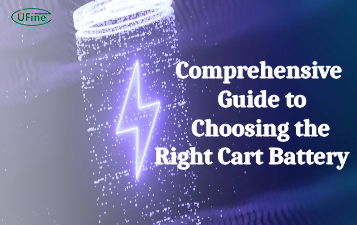Lithium-ion battery internal resistance impacts how well the battery works. Learn about what it is, its factors, how to calculate it, and its effects on battery use. Understanding this is key for better efficiency and a longer battery life.
Part 1. What is lithium-ion battery internal resistance?
Ohmic Resistance
Lithium Ion Battery internal resistance encompasses various elements hindering the current flow within the battery. Ohmic resistance, a fundamental component, represents the inherent opposition within the battery’s components. This resistance arises due to the physical properties of the battery materials, including the electrodes, electrolytes, and separators. Ohmic resistance is quantified in ohms and contributes to the voltage drop experienced during current flow.
Polarization Resistance
Another aspect of Lithium Ion Battery internal resistance is polarization resistance. This resistance arises due to the electrochemical processes occurring within the battery during charge and discharge cycles. Polarization resistance involves phenomena such as the movement of ions, charge transfer at electrode interfaces, and concentration polarization within the electrolyte. It impacts energy conversion efficiency within the battery and affects its overall Performance.
Part 2. Factors influencing lithium-ion battery internal resistance
Electrolyte
The composition and conductivity of the electrolyte significantly impact internal resistance. Electrolytes with higher ion conductivity reduce resistance, allowing smoother ion movement between electrodes. Conversely, less conductive electrolytes increase internal resistance, impeding ion flow and affecting battery performance.
Diaphragm
The diaphragm or separator within the battery influences internal resistance by controlling ion movement. Its permeability and structure impact the resistance by facilitating or restricting the passage of ions between electrodes. Optimized diaphragm design can lower resistance and enhance battery efficiency.
Collector
The material and design of the current collector affect internal resistance. Proper collector design ensures efficient electron transfer between electrodes, minimizing resistance. Materials with high conductivity, such as copper or aluminum, can reduce resistance by aiding electron flow.
Current
The magnitude and direction of the current passing through the battery affect internal resistance. Higher currents can lead to increased resistance due to factors like heat generation and changes in ion mobility within the battery’s components.
Temperature
Temperature variations play a critical role in internal resistance. Low temperatures increase resistance by restricting ion movement, impacting battery performance. Conversely, high temperatures might lower resistance but can accelerate degradation processes, affecting long-term resistance.
Manufacturing Process
The battery manufacturing process influences internal resistance. Factors like electrode thickness, material quality, assembly techniques, and quality control measures impact the uniformity of the battery’s components, subsequently affecting internal resistance. Well-optimized manufacturing processes can result in lower internal resistance and enhanced battery performance.
Part 3. How does internal resistance affect performance?
Voltage Output and Sag
Internal resistance significantly influences a battery’s ability to maintain a steady voltage output when powering a device. For instance, in a smartphone with a Lithium Ion Battery exhibiting high internal resistance, when the device experiences heavy usage (like gaming or video streaming), the battery voltage might sag noticeably, causing the device to shut down or prompt a low battery warning prematurely.
Efficiency and Energy Loss
Consider an electric vehicle (EV) powered by a lithium-ion battery with increased internal resistance. The higher resistance leads to energy loss as heat during charge and discharge cycles. This lost energy, instead of contributing to the vehicle’s propulsion, dissipates as heat, reducing the overall efficiency of the EV and decreasing its driving range per charge.
Capacity and Run Time
The adequate capacity diminishes in a laptop utilizing a Lithium Ion Battery with elevated internal resistance. The battery’s capacity decreases as the resistance increases, affecting the laptop’s run time between charges. This reduced usable capacity shortens the device’s operational duration, requiring more frequent recharging.
Heat Generation and Battery Health
Consider a power tool powered by a Lithium Ion Battery with increased internal resistance. The higher resistance causes more heat to be generated during high-demand tasks. This excessive heat accelerates battery degradation, reducing its lifespan. Over time, the tool’s battery loses its ability to hold a charge. It becomes prone to failure due to increased internal resistance-induced heat stress.
Part 4. How do you calculate the internal resistance of a battery cell?
1. Voltage Drop Method
One approach to calculating internal resistance involves the voltage drop method. Start by measuring the open-circuit voltage of the battery. Then, apply a known load (a resistor or device with a general resistance) to draw current from the battery. Measure the voltage across the battery terminals while the load is connected and drawing current. Using Ohm’s Law (R = V/I), where R is resistance, V is voltage. I is current; you can calculate the internal resistance (R = V / I), where V is the change in voltage, and I is the change in current caused by the load.
2. AC Impedance Spectroscopy
Another method involves using AC impedance spectroscopy. This technique applies an AC signal across the battery terminals at varying frequencies. By analyzing the impedance response of the battery to these frequencies, particularly at low and high frequencies, you can extract information about the battery’s internal resistance and other electrochemical properties.
3. Pulse Discharge Method
The pulse discharge method is also utilized for internal resistance calculation. Apply a short, high-current pulse to the battery and measure the voltage drop during this pulse. Analyze the voltage change over time to determine the internal resistance. This method is beneficial for quick assessments but requires careful consideration of the pulse’s duration and intensity to avoid damaging the battery.
4. Data Analysis and Curve Fitting
Advanced techniques involve collecting discharge curves from the battery. You can perform curve fitting or regression analysis to extract the internal resistance by analyzing the voltage versus time data during discharge under various loads. This method provides a more detailed insight into resistance variations across different operating conditions.
5. Simulation and Modeling
Simulations can use specialized software or battery modeling tools to predict internal resistance based on battery specifications, materials, and operating conditions. These simulations consider factors like electrode composition, electrolyte properties, and temperature to estimate internal resistance without physically testing the battery.
Part 5. FAQs
-
What is the normal internal resistance of a lithium-ion battery?
The normal internal resistance of a lithium-ion battery varies depending on factors such as its state of charge, temperature, and age. Typically, it ranges from a few milliohms (mΩ) to tens of milliohms. -
What is the internal resistance of a lithium-ion 18650 battery?
The internal resistance of a lithium-ion 18650 battery may vary based on the specific model, age, and condition. Generally, it can range from around 20 to 80 milliohms (mΩ) for these types of batteries. -
How do you measure the internal resistance of a lithium battery?
The internal resistance of a lithium battery can be measured using specialized equipment like battery analyzers or dedicated internal resistance meters. These devices apply a small known current to the battery and measure the voltage drop across it to calculate internal resistance. -
How do you reduce internal battery resistance?
To reduce internal battery resistance, maintain proper charging practices, avoid high discharge rates, and operate the battery within its recommended temperature range. Additionally, ensuring good contact between cell components and using high-quality materials during manufacturing can help reduce resistance. -
What is a good internal resistance of a LiFePO4 battery?
A good internal resistance for a LiFePO4 (lithium iron phosphate) battery is typically lower than other lithium chemistries. Depending on the specific battery model and condition, it may range from around 2 to 20 milliohms (mΩ). Lower internal resistance often indicates better Performance and efficiency.
Related Tags:
More Articles

Comprehensive Guide to Choosing the Right Cart Battery
Choosing the right cart battery ensures optimal performance and longevity. This guide covers cart battery types and helps you make an informed choice.
The Ultimate Guide to 18650 Button Top Battery
18650 button top batteries are popular for their high energy density and reliability. This guide covers their key features, usage, and maintenance tips.
The Power of Slim: Unveiling the Potential of Flat Lithium Ion Battery
Flat lithium-ion batteries power devices from phones to vehicles. This article explores their design, benefits, types, applications, charging, and safety.
The Comprehensive Guide to Battery Balancing and Battery Balancer
Battery balancing and balancers optimize performance, longevity, and safety. This guide covers techniques and tips for choosing the right balancer.
10 Key Facts About Drone Battery for 2024
Uncover crucial insights with "10 Key Facts About Drone Battery for 2024." Learn the latest trends and essential details on drone batteries.



